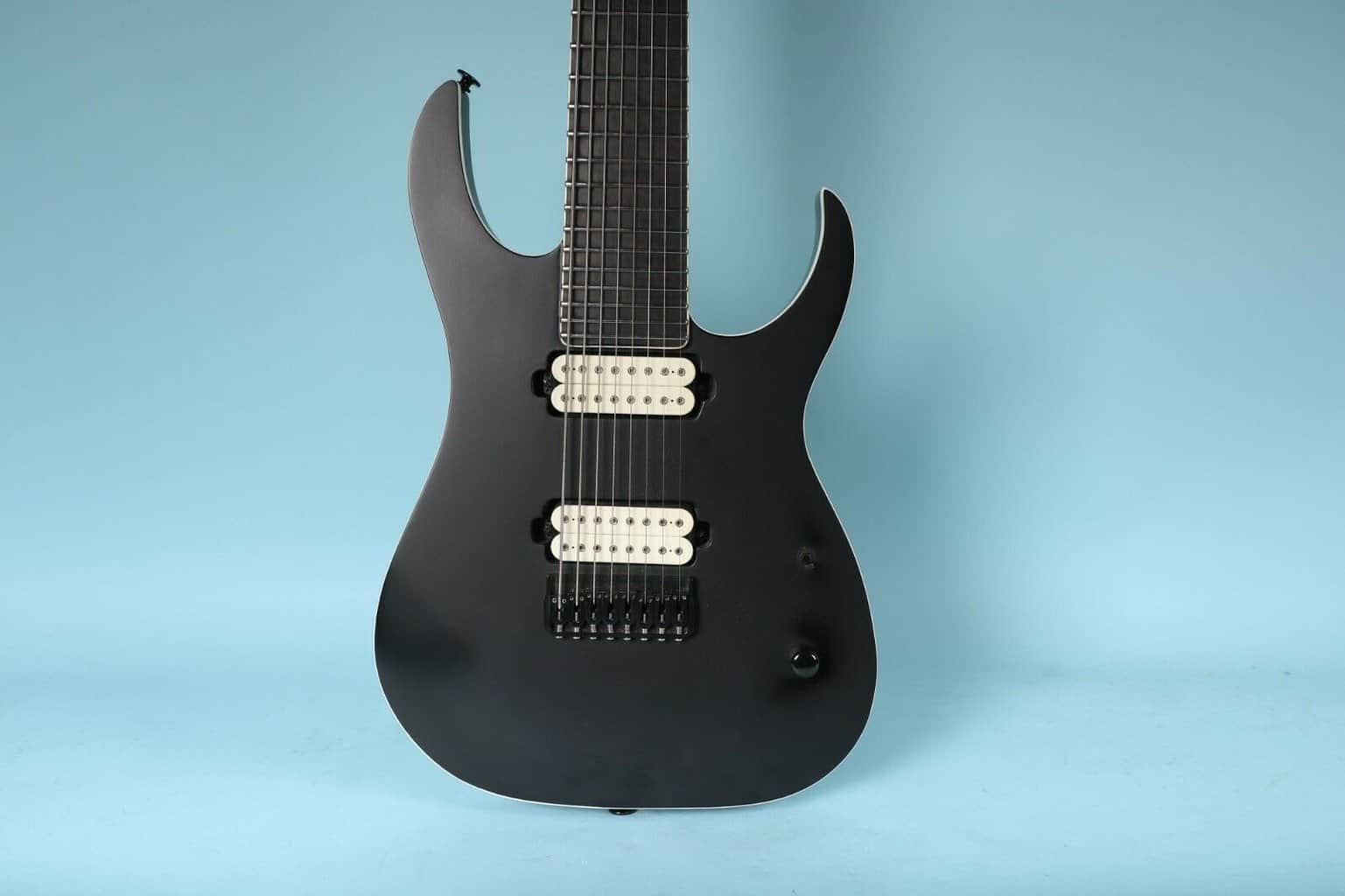I admit that 8-string guitars can seem huge and intimidating, especially with fanned frets.
And they are definitely associated with heavy music genres like djent, progressive metal, and nu-metal.
You may even think that you need to have facial hair or a Youtube channel in order to play 8-string guitars. But you don’t need any outrageous qualifications to play them, except maybe decently large hands and an ambitious attitude.
Alternate tunings on 8-string guitars are nothing to be afraid of. Most of the popular ones follow the trends of other guitars with lower-key standard tunings, top-string drop tunings, and open tunings. There is a High A tuning which at first seems difficult but there is actually a trick, which makes it easier.
Even with the success of people like Rob Scallon on Youtube, I certainly wouldn’t call 8-string guitars popular compared to 6 and 7-string models.
So even the standard tuning out of the box will sound pretty unique to most people’s ears. After all, you’re practically playing guitar and bass at the same time.
But musicians love to modify and tinker with their instruments so here are some alternate tunings that are popular for 8 strings.
All you need to know about 8-string alternate tunings
First, we should establish what the standard tuning for these instruments is.
While a 7-string adds a low B string to traditional 6-string tuning, an 8-string guitar adds that B and then an even lower F# string in standard tuning so standard tuning is F#-B-E-A-D-G-B-E.
For reference, the F# string gauge can be anywhere from .065 – .080. That’s heavy!
So if you are new to 8-string guitars I would go slowly when experimenting with alternate tunings and take time to get used to the standard tuning, thick strings, and larger dimensions of the fretboard.
Once you feel comfortable, then it’s time to have a go at some of these cool alternatives!
4 must-know 8-string guitar tunings
1. E Standard Tuning
Tuning extended-range instruments even lower seems to be a popular trend. Each string is tuned a full step down to preserve the intervals between strings so we get E-A-D-G-C-F-A-D.
Nothing too crazy but since this puts the top four strings into the same notes as a 6-string guitar, this one would be ideal for playing along with a six-string guitarist or 4-string bassist.
By using the same intervals you can tune to many varieties of standard tuning and A Standard (A-D-G-C-F-A-D-G) is also popular.
2. Drop E
It’s another well-known option and is easy to try out. This one simply drops the 8th string a full tone from F# to E, resulting in E-B-E-A-D-G-B-E.
Now you have access to power chords on the top three strings as you would playing Drop D on a six-string guitar or Drop A on a seven-string guitar.
This is a great sound for aggressive styles of music that tend to be played mainly on the top strings anyway.
3. Open C
It’s achievable on 8-string instruments by tuning to E-C-G-C-G-C-G-E.
Open tunings are often easier to play and can be used for slide guitar but I don’t imagine that slides mix with 8-string guitar models that have fanned frets very well. Regardless, this is one to try out if you are looking to change up your sound.
4. High A Tuning
This one is comprised of the notes B-E-A-D-G-B-E-A.
Now High A tuning seems like an absolute nightmare to get right. But it is actually like shifting all seven strings of a seven-string guitar up one position and adding the high A as the first string.
This one was used on an 8-string guitar by Rusty Cooley when he endorsed Dean Guitars.
Mr. Cooley likes to shred with it so if that’s not your style of playing then this tuning may not be right for you. In addition, you are losing a lot of lower range by removing the F# string.
Should you set up your guitar every time you change its tuning?
Trying any extremely different tuning will of course change the playability of your instrument. And this is especially true if you change the gauge of strings that your guitar is set up for.
For the tunings that we have covered, I would say that Drop E is the exception since I have never had to set up any of my guitars to use Drop D tuning since you are only lowering tension on one string and I can adjust the attack of my right hand accordingly.
But if you switch from light or medium strings to heavy strings for something like E standard you may have to get a setup or adjust the truss rod at least.
You will also have to factor in the time or cost for probable adjustments for A Standard, Open C, and High A tuning.
Finally, if you plan on leaving your guitar in an alternate tuning, I would really recommend treating yourself to a professional setup by a guitar tech if you are not able to do it properly at home.
A brief guide to alternate tunings and string gauges
Since we are getting away from the “mainstream” of guitars with 8-string instruments, there are also fewer string sets available for sale.
It’s sort of like how the oxygen in the air grows thinner the higher you go up a mountain.
Looking at packaged sets of 8 strings at Sweetwater, there are only twelve choices available and two of those are for Strandberg brand guitars.
So for Drop E, I would recommend a heavy top/light bottom set such as D’Addario’s EXL140-8 or Ernie Ball’s 2624 set.
For E Standard I would again go for the D’Addario’s EXL140-8 or maybe Ernie Ball’s 2625 since these both have .010 as their lightest gauge.
The High A tuning is a special case and can best be done using a medium or heavy set of 7-string guitar strings (heavy will give you a tighter fit in the nut slots) for the top 7 strings and ordering a single plain steel .007 string from D’Addario.
Actually, you should probably order multiple single .007s in case you break any tuning up that far.
There is a video that explains doing this tuning that is worth a watch that I will link to below.
But first, I think this string setup is also how the aforementioned A Standard tuning is achieved, just lowered a full step, so you could maybe get away with a .008 gauge for the lightest string on that one. I mean, I just can’t imagine tuning the F# string all the way up or down to A.
Finally for Open C (E-C-G-C-G-C-G-E), using some combination of strings from multiple sets should work (for example, using a G string (third string) as the fourth string, a B string (second string) tuned up to C as the third string, etc.).
Or even better…although I’ve never seen any mention of this tuning, I would be curious to try tuning the first six strings to Open D, the 7th string down to A, and leaving the top string as F# (or maybe tuning it down to D) resulting in F#-A-D-A-D-F#-A-D (or D-A-D-A-D-F#-A-D).
I think this Open D tuning is a great option because it could easily be done with one set of strings and I’ll bet it sounds pretty good. You can thank me later.

Hello there, my name is Ramiro and I’ve been playing guitar for almost 20 years. I’m obsessed with everything gear-related and I thought it might be worth sharing it. From guitars, pedals, amps, and synths to studio gear and production tips, I hope you find what I post here useful, and I’ll try my best to keep it entertaining also.





